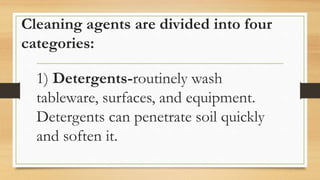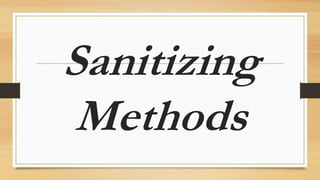Cleaning removes food and other soils from surfaces using cleaning agents like detergents, solvents, acids, or abrasives. Sanitizing with heat, radiation, or chemicals lowers the number of microorganisms to safe levels. Effective sanitizing depends on the concentration of chemicals, temperature, and contact time used. Utensils must be washed, sanitized, and dried while following factors like chemical safety and clean drying materials. Regular cleaning of the kitchen removes germs and bacteria.











